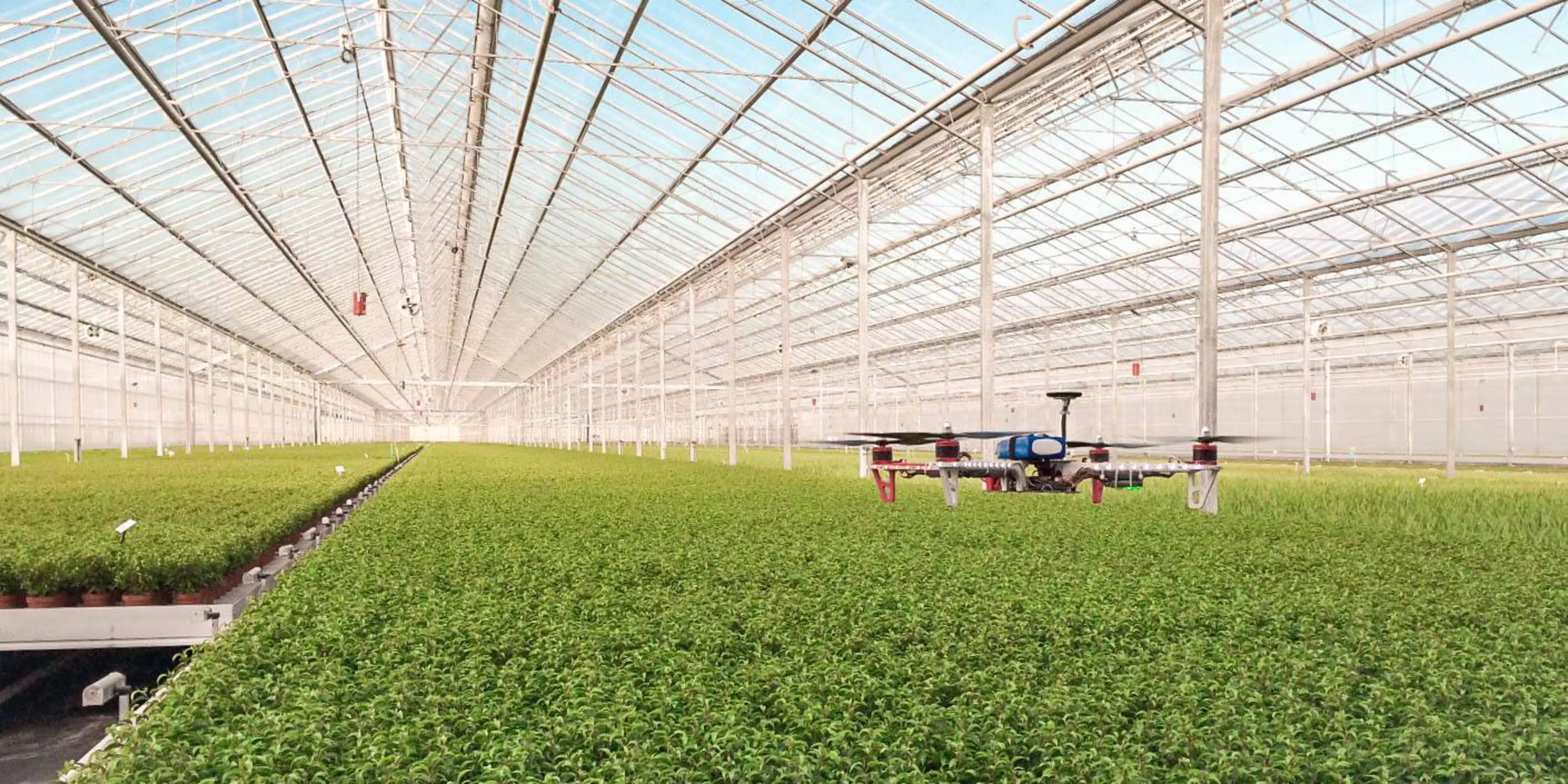If you ask people what they think of when you mention the Netherlands, the most common answer – aside from clogs – is likely to be tulips. That is far from absurd, because the cultivation of ornamental crops is in third place for the country’s biggest-selling export articles. To remain agriculturally successful while acting sustainably, the sector has to be constantly imaginative. That is why, in the course of digitisation, intensive experimentation with precision farming is ongoing. Drones fly through the greenhouses to detect plant diseases and search for weeds among the fields of lilies and tulips.
Those who are not tall must be smart. The room for farming in the Netherlands is limited. To get as much as possible out of the soil, the Dutch farmers have to be innovative. The scarcity of agricultural land has made Dutch farming a world leader in various disciplines, such as greenhouse horticulture and floriculture. The country sees a new opportunity in digital agriculture.
Double harvests with multi-layered cultivation
Digital innovations in the flower bulb sector have repeatedly led to developments in agriculture and horticulture. One example of this is multi-layered tulip cultivation. This is where cultivation in the greenhouse is stacked vertically, so that the grower can increase production without having to expand the ground area in the greenhouse. The maths is very simple: with just two cultivation levels, the harvest is already doubled.
Smart farming
In this type of smart farming, an automated transport system moves the tulips and other crops from one level to the next. The tulips are grown partly in the dark, partly under LED lighting and partly in daylight. Searching for the ideal illumination for each individual level serves to develop the best tulip quality with minimal energy costs and thus achieve the greatest economic value.
Healthy plants through the use of precision agriculture
Diseases and pests are the most common causes of lost plant harvests in both quantitative and qualitative terms. Farmers and gardeners therefore do their best to protect the health of their plants. Greenhouse growers also check their crops daily for disease. An intensive, costly procedure for the operation.
A drone sees more and can detect more than a person walking through the greenhouse. A group of aeronautical engineering students is therefore investigating the added value of drones in detecting problems with plants in greenhouses. First, they developed a drone that could fly through greenhouses. While drones usually work with GPS, this is not possible in a greenhouse. The development of special software for digital agriculture has made it possible to locate and geographically position the greenhouse.
Benefits of digitisation: recognising disease with drones
The students eventually managed to use drones to create images that exposed spots and anomalies in an orchid greenhouse. This information alone saves the grower a lot of time removing sick crops. In the next step, digital software is being written that analyses the photos and automatically detects diseases: a step forward for farming.




